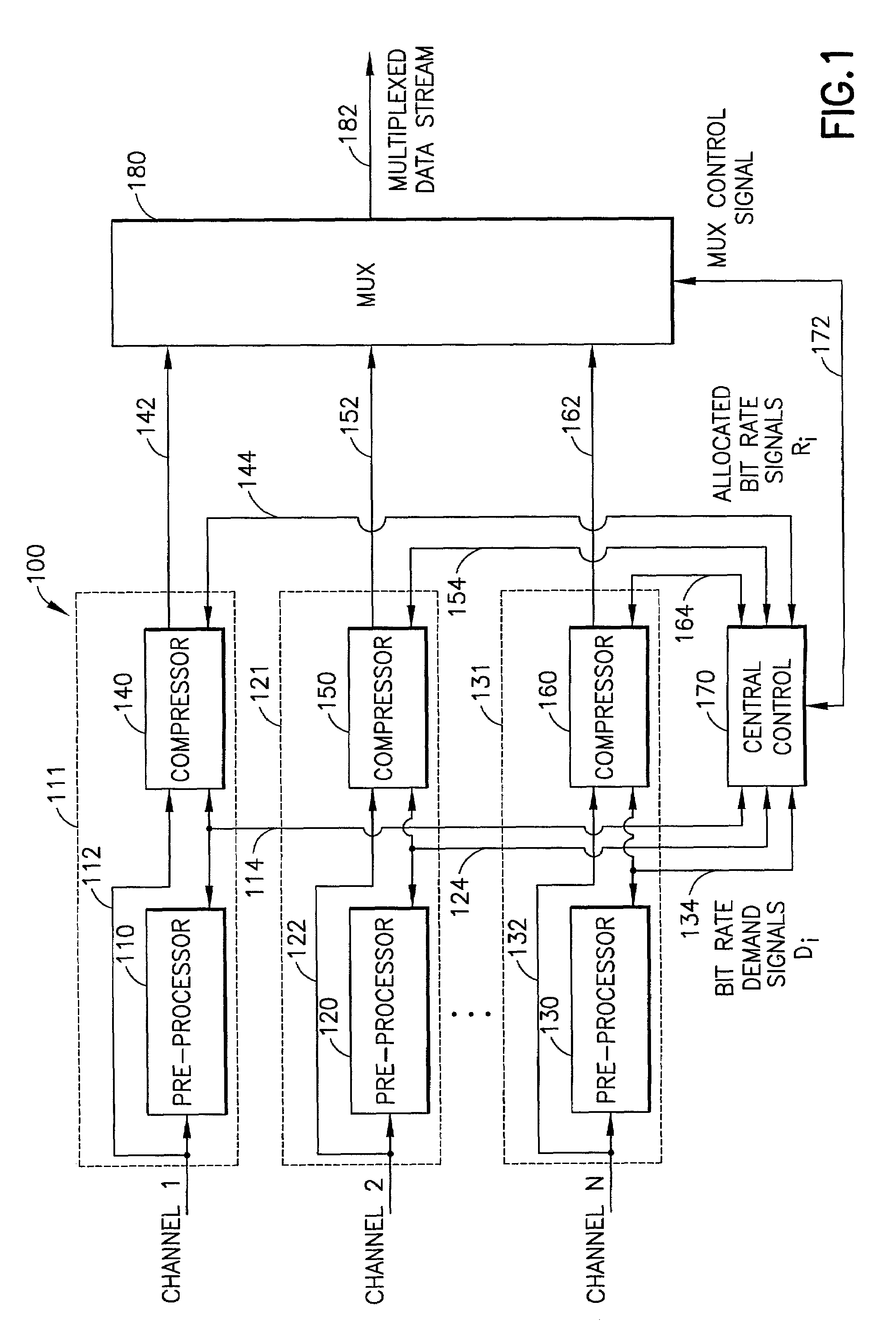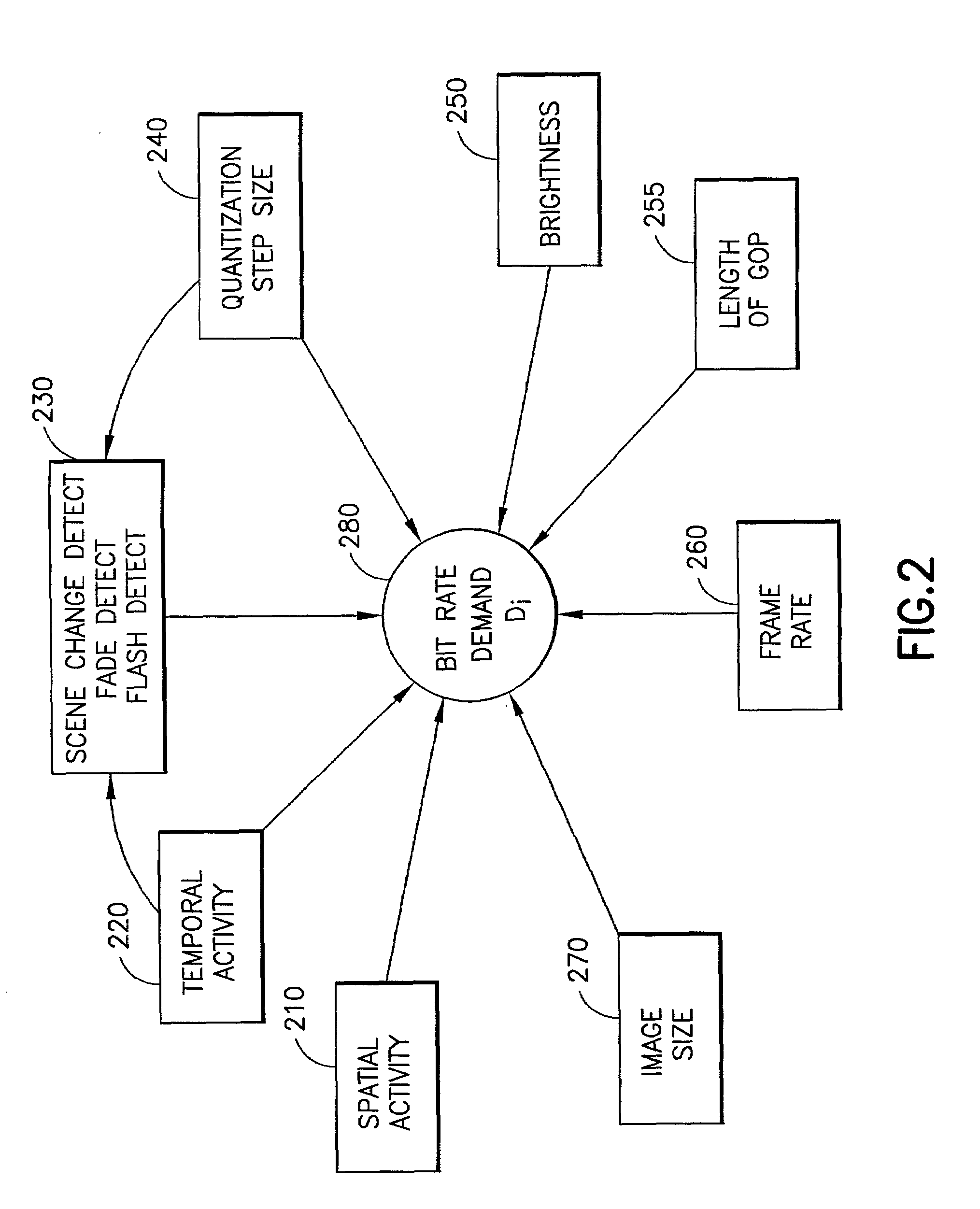Pre-processing of bit rate allocation in a multi-channel video encoder
a multi-channel video and encoder technology, applied in the field of statistic multiplexing, can solve the problem of increasing bit rate allocation, achieve the effect of increasing bit rate demand di, maintaining a perceived image quality, and enhancing pictur
- Summary
- Abstract
- Description
- Claims
- Application Information
AI Technical Summary
Benefits of technology
Problems solved by technology
Method used
Image
Examples
Embodiment Construction
[0034]The present invention relates to a method and apparatus for bit rate allocation in a multi-channel video data encoder.
[0035]FIG. 1 illustrates a multi-channel video encoder in accordance with the present invention. A multi-channel video encoder shown generally at 100 includes a number N of channel encoders 111, 121, . . . , and 131. Each channel encoder, also referred to as an application, includes a pre-processor and a compressor. These components need not be physically separate but may be implemented in shared hardware, firmware and / or software. However, in a particularly advantageous embodiment of the present invention, the pre-processor circuitry is used with existing commercially available video compression circuitry to allow quick and easy retrofit of an existing channel encoder.
[0036]A first channel encoder 111 includes a pre-processor 110 and a compressor 140, while a second channel encoder 121 includes a pre-processor 120 and a compressor 150, and an Nth channel encod...
PUM
 Login to View More
Login to View More Abstract
Description
Claims
Application Information
 Login to View More
Login to View More - R&D
- Intellectual Property
- Life Sciences
- Materials
- Tech Scout
- Unparalleled Data Quality
- Higher Quality Content
- 60% Fewer Hallucinations
Browse by: Latest US Patents, China's latest patents, Technical Efficacy Thesaurus, Application Domain, Technology Topic, Popular Technical Reports.
© 2025 PatSnap. All rights reserved.Legal|Privacy policy|Modern Slavery Act Transparency Statement|Sitemap|About US| Contact US: help@patsnap.com



